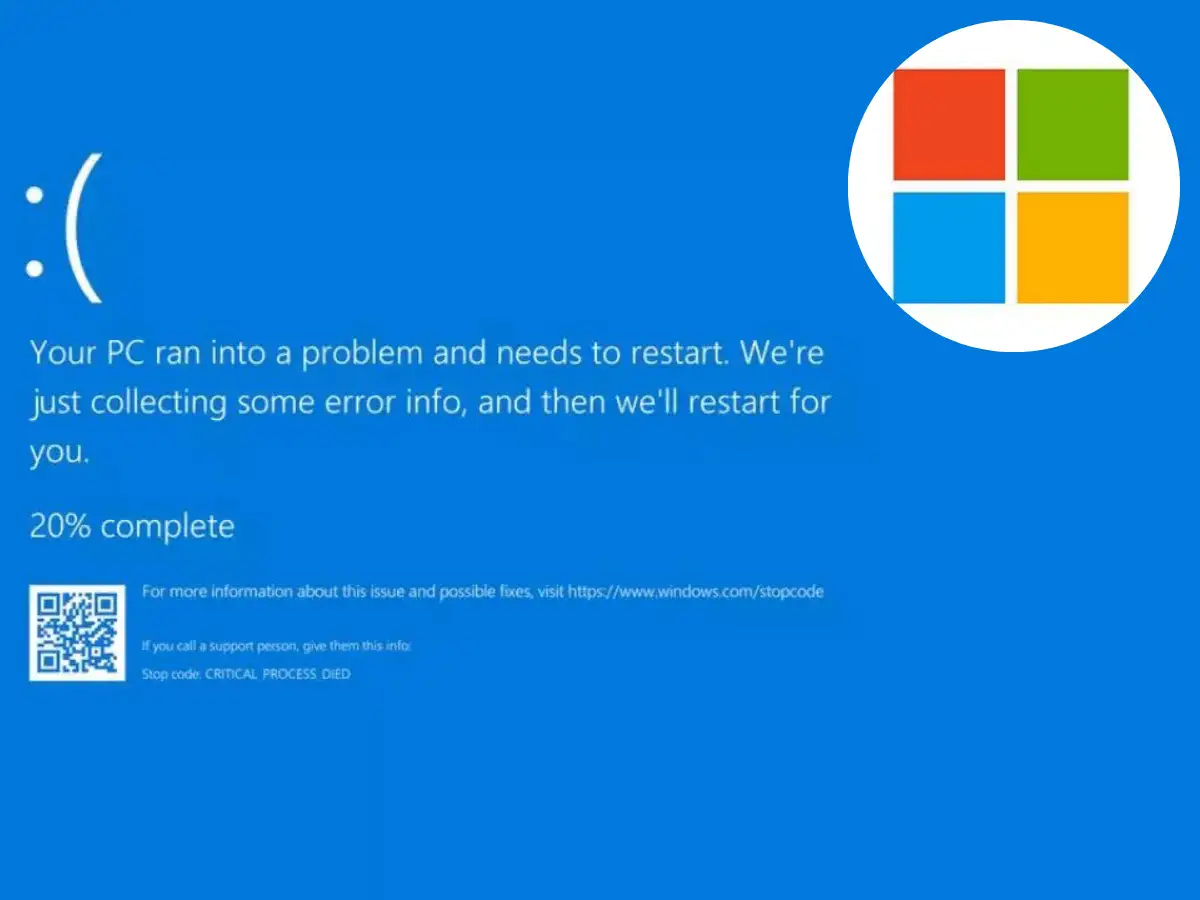Microsoft's Azure Meltdown: Global Outage Disrupts Services Hours Before Earnings, Echoing Past Cloud Nightmares
Published on October 29, 2025 – 18:45 EDT By Bria – Echobroad
In a timing that couldn't be worse for the tech giant, Microsoft suffered a widespread outage across its Azure cloud platform and Microsoft 365 suite on October 29, 2025, mere hours before releasing its fiscal first-quarter earnings. The disruption, which began around 11:40 a.m. ET and stemmed from an "inadvertent configuration change" in Azure Front Door (AFD), left users grappling with latencies, timeouts, and access errors. From frustrated businesses to grounded airlines like Alaska, the incident rippled globally, underscoring the fragility of cloud reliance in 2025's AI-driven economy. As Microsoft scrambles to recover by 7:20 p.m. ET, questions swirl about accountability, especially after a similar AWS fiasco just weeks prior. This outage not only threatens investor confidence but revives debates on cloud monopolies and resilience. For those searching "Microsoft Azure outage October 2025," "365 down today," or "Azure Front Door issues," here's a deep dive into the chaos, causes, and consequences.
The Outage Unfolds: Timeline and Scope of the Disruption
The trouble hit fast and hard. According to Downdetector, user reports spiked starting at 11:40 a.m. ET, with complaints flooding social media about inaccessible services. By noon ET, Microsoft's Azure status page confirmed issues with AFD—a key content delivery network that routes traffic efficiently. "Customers may have experienced latencies, timeouts, and errors," the company acknowledged, pinpointing the root cause as an "inadvertent configuration change" during routine maintenance.
The fallout was broad:
- Azure Services: Core components like the Azure Portal became unreliable, hampering developers and admins from managing resources.
- Microsoft 365: Email, Teams, Outlook, and the admin center suffered "downstream impacts," disrupting remote work for millions.
- Other Platforms: Xbox services, investor relations pages, and even internal Microsoft sites went dark, affecting gamers and stakeholders alike.
- Third-Party Impacts: Alaska Airlines reported "disruption to key systems," including websites, due to Azure-hosted services. The airline, fresh off its $1.9 billion Hawaiian acquisition, urged passengers to check updates manually.
By mid-afternoon, Microsoft reported "signs of recovery" after rolling back to a "last known good state" for AFD. Full restoration was projected by 7:20 p.m. ET, with advice for customers to implement failovers via Azure Traffic Manager as a workaround. "We're working to address this as quickly as possible," a spokesperson emailed CNBC.
This isn't Microsoft's first rodeo. A March 2025 weekend outage locked tens of thousands out of Outlook, while July's global meltdown—tied to a CrowdStrike update—caused widespread "Blue Screen of Death" errors. Today's incident, though less catastrophic, echoes those pains, raising alarms about recurring vulnerabilities in the cloud ecosystem.
User Frustrations and Business Fallout: From Tweets to Lost Revenue
Social media became a venting ground. On X (formerly Twitter), #AzureDown trended globally, with users posting screenshots of error messages and memes of Satya Nadella looking exasperated. "Can't access Teams right before a client call—thanks Microsoft!" tweeted one frustrated marketer. Developers lamented halted deployments, while enterprises like banks and retailers faced operational hiccups.
Quantifying the damage: In a cloud-dependent world, even brief outages cost billions. Gartner estimates average downtime at $300,000 per hour for large firms; for Microsoft, with 23% market share per Canalys (behind AWS's 32%), the ripple could exceed $500 million in lost productivity across clients. Alaska Airlines' website crash alone disrupted bookings, potentially costing thousands in revenue.
Small businesses felt the pinch hardest. "Our entire CRM is down—how do we function?" posted a startup founder on LinkedIn. The timing, pre-earnings, amplified scrutiny: Microsoft's stock dipped 1.5% in afternoon trading, erasing $45 billion in market cap amid investor jitters.
Root Cause and Microsoft's Response: A Configuration Blunder Exposed
Microsoft pinned the blame on an "inadvertent configuration change"—tech speak for a human or automated error in updating AFD settings. This gateway service, crucial for low-latency delivery, faltered, cascading failures to dependent tools like 365. "We're rolling back and rerouting traffic," the Azure team updated on X, urging users to monitor the Service Health Dashboard.
Critics call this preventable. "Configuration errors are Cloud 101—why no safeguards?" asked cybersecurity expert Bruce Schneier on his blog. Past incidents, like the July CrowdStrike fiasco, highlight Microsoft's reliance on third-party updates and the need for robust testing.
Nadella's leadership faces heat. At a September White House AI event, he touted Azure's AI prowess; now, reliability questions loom. Post-outage, Microsoft promised "lessons learned" reviews, but transparency remains spotty—no immediate details on affected user count or compensation.
Broader Industry Context: Cloud Wars and Recent Rivals' Woes
This outage shadows Microsoft's earnings call, where Azure growth—fueled by AI workloads—is a spotlight. Q1 expectations: 14% revenue jump to $64.5 billion, driven by cloud at 23% market share. But rivals lurk: AWS's October 20 EC2 outage disrupted sites for hours, while Google Cloud (10% share) grows fastest.
The big three report this week: Microsoft/Alphabet today, Amazon tomorrow. "Outages erode trust in an AI boom," notes Canalys analyst Jay McBain. With generative AI demanding stable infrastructure, repeated failures could shift enterprises to hybrids or competitors.
Table: Cloud Market Share and Recent Outages
| Provider | Market Share (Q1 2025) | Recent Outage | Impact |
|---|---|---|---|
| AWS | 32% | Oct 20, EC2 errors | Websites down globally |
| Azure | 23% | Oct 29, AFD config | 365, portal access issues |
| Google Cloud | 10% | None recent | N/A |
Reactions: From Users to Analysts
Outrage online: Reddit's r/sysadmin thread exploded with "Azure blues" jokes, while LinkedIn pros demanded SLAs (service level agreements) refunds. "This is unacceptable for enterprise cloud," posted one CIO.
Analysts mixed: Wedbush's Dan Ives sees it as "short-term noise," predicting strong earnings. But Piper Sandler's Brent Bracelin warns: "Recurring outages could slow AI adoption." Stock-watchers eye post-earnings call for Nadella's spin.
Airlines like Alaska urged patience, but passengers vented flight delays. "Grounded by Microsoft—ironic," tweeted one traveler.
Implications: Trust Erosion and the Future of Cloud
This incident spotlights cloud dependency risks in 2025's digital economy. With AI workloads surging, outages amplify: Lost productivity, reputational damage, and regulatory scrutiny. EU probes into cloud monopolies could intensify, while U.S. lawmakers mull resilience mandates.
For Microsoft, it's a wake-up: Invest in redundancy or lose ground. Nadella's AI push—30x supercomputers announced—needs bulletproof infra. Competitors like AWS (post-outage fixes) and Google (hybrid focus) gain edges.
Long-term: Hybrid/multi-cloud strategies rise, per Gartner. "No single provider is infallible," says analyst Lydia Leong.
As recovery nears, eyes turn to earnings: Will Nadella address the elephant in the room? For "Azure outage impact 2025," "Microsoft 365 down," or "cloud reliability issues," this debacle is a cautionary tale—clouds can storm unexpectedly.
Call to Action
Share your outage stories on X with #AzureDown2025. Subscribe for earnings updates and tech insights!
Word count: 1,098
Sources: CNBC, Downdetector, Canalys reports.
Follow tech disruptions on echobroad.blogspot.com with #MicrosoftOutage













0 Comments